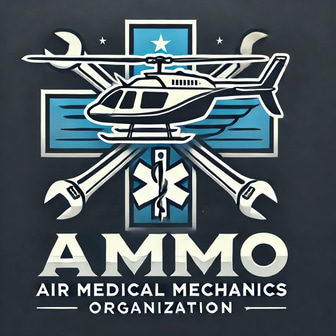Disclaimer: The information provided is for general informational and educational purposes only. Nothing contained herein shall be construed as guidance for, or a basis of, compliance of any regulatory or certification standards. This information must not be used as the sole basis for the certification, inspection, repair, modification, or return to service of any aircraft, product, or component. Users are responsible for consulting appropriate, approved technical data, regulatory authorities, before performing any maintenance, modification, or return-to-service actions.
Fuel System Safety and Maintenance
Fuel Handling and Storage Regulations
FAA 8900.1, Vol. 2, Ch. 2, Sec. 5 – Covers FAA fuel system inspection protocols and safety measures for fuel handling at airports and maintenance facilities. It provides guidelines for certifying and maintaining aviation fuel systems to prevent contamination and safety hazards.
FAA 8900.1, Vol. 6, Ch. 11, Sec. 21 – Details FAA procedures for fuel system audits, safety inspections, and compliance checks. This section is crucial for aviation operators and maintenance personnel to ensure adherence to fuel quality and storage standards.
Aviation Fuel Standards and Contamination Prevention
AC 150/5230-4A – Provides guidance on airport fueling operations, fuel handling procedures, and fuel quality control. It includes fuel contamination detection techniques, safe storage practices, and personnel training requirements for fuel safety at airports and fixed-base operators (FBOs).
AC 20-116 – Covers the impact of fuel contamination on aircraft engines and systems, including best practices for detecting and preventing microbial growth in fuel tanks. Pilots and maintenance teams must follow these recommendations to ensure proper fuel quality before flight operations.
Aircraft Fuel System Design and Performance
Fuel System Certification and Design Standards
AC 20-119 – Establishes FAA fuel system safety certification requirements for aircraft manufacturers. It explains the design and installation standards for fuel tanks, pumps, and filtration systems to enhance aircraft performance and safety.
AC 20-122A CHG 1 – Discusses fuel venting and safety valve requirements for aircraft fuel systems. It ensures compliance with FAA regulations to prevent fuel leaks, over-pressurization, and hazardous fuel vapor emissions.
AC 20-125 – Provides testing and certification requirements for aircraft auxiliary fuel systems. It outlines best practices for installing and maintaining additional fuel tanks and pumps for extended flight operations.
Fuel Efficiency and System Enhancements
AC 20-29C – Discusses fuel conservation techniques for pilots and operators. It explains how efficient fuel management can reduce operating costs and improve aircraft range while complying with FAA safety standards.
AC 20-53C – Focuses on aircraft fuel system reliability and performance enhancements. It provides recommendations for improving fuel line durability, pump efficiency, and pressure regulation systems.
Regulatory Compliance and Fuel System Testing
Fuel System Safety for Specific Aircraft Categories
AC 23-10 – Covers fuel system safety standards for small aircraft under Part 23 regulations. It outlines fuel tank construction, engine fuel supply, and fire protection measures for general aviation aircraft.
AC 25.954-1 – Provides fuel tank safety and flammability reduction requirements for transport-category aircraft. It includes compliance measures for preventing fuel tank explosions and reducing fire risks.
AC 25-8 – Discusses FAA fuel system safety regulations for large commercial aircraft. It establishes standards for fuel tank inerting, venting, and protection against external ignition sources.
Fuel Testing, Certification, and Airworthiness Compliance
AC 21-16G – Provides guidance on fuel system testing and certification for aircraft manufacturers. It outlines procedures for evaluating new fuel system designs, ensuring compliance with FAA regulations, and conducting safety assessments.
© 2024. All rights reserved.
Disclaimer: The information provided by the Air Medical Mechanics Organization (AMMO) is for general informational and educational purposes only. It has not been reviewed, approved, or accepted by the Federal Aviation Administration (FAA), any Organization Designation Authorization (ODA) holder, Type Certificate (TC) holder, Supplemental Type Certificate (STC) holder, or any aircraft or component manufacturer.
Nothing contained herein shall be construed as guidance for, or a basis of, compliance with FAA regulations, manufacturer-approved data, type certificate or supplemental type certificate requirements, or any other regulatory or certification standards. This information must not be used as the sole basis for the certification, inspection, repair, modification, or return to service of any aircraft, product, or component.
Users are responsible for consulting appropriate, approved technical data, regulatory authorities, and manufacturer guidelines before performing any maintenance, modification, or return-to-service actions. AMMO assumes no liability for the use or misuse of any information provided
